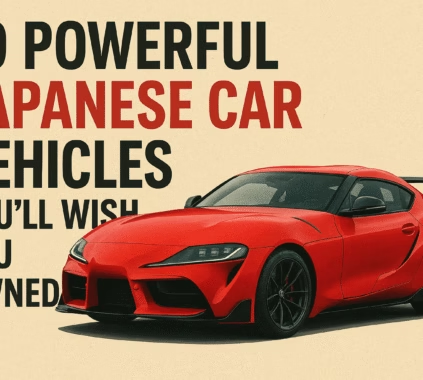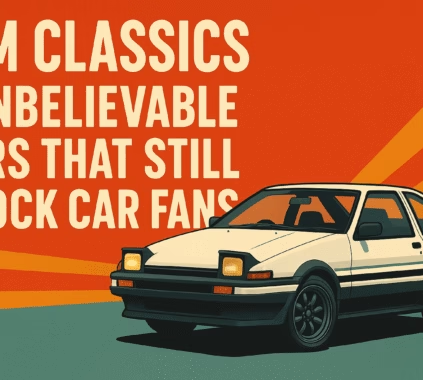Japanese cars changed the global automotive landscape and we mean redefined it, with approachable sports cars that made driving fun again to engineering-first supercars that rewrote the books on performance and reliability.
As a long-time JDM lover boy, I penned this deep dive to 10 machines that didn’t just sell in big numbers, they changed the way the world thought about Japanese cars.
Table of Contents
Look for history, tech, culture and why each model remains significant today.
Why these cars matter
These ten models range across decades and philosophies, but they do have one thing in common, Each of them changed expectations either for performance, engineering, styling or accessibility.
When people say “game-changer” about Japanese cars, they usually have in mind something along these lines: affordable performance (Datsun 240Z), precision engineering (Honda NSX), ubiquitous tunability (Toyota Supra) or rally-born heroics (Subaru Impreza WRX).
Here, we take a look at the story and legacy of each car.
1.Datsun 240Z the democratic sports car
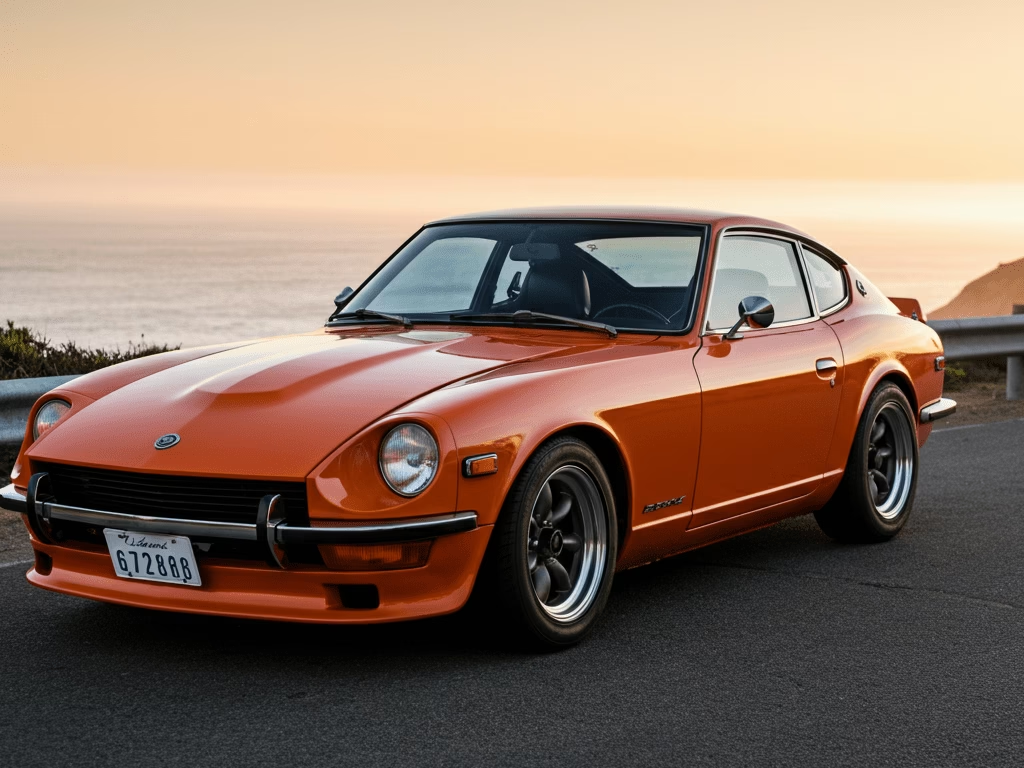
What the Datsun 240Z showed was that Japanese cars could do style and sporting ability at a fraction of the price Europeans were charging for sports car luxury.
When introduced in the late ’60s and early 1970s, it paired a sexy coupe body with a smooth inline-six engine and an affordable price building tens of thousands of sales in its first couple years, while putting Japanese automaker Nissan (then Datsun) on the global sports-car map. Car and Driver
Key impact:
- Brought sports-car ownership within reach of many more buyers.
- A good racing and aftermarket presence (BRE winning).
- Classic proportions well balanced that serve as a template for subsequent Z cars.
Quick specs (early 240Z): 2.4-liter Inline six, ~150 hp, lightweight chassis, timeless looks.
2.Nissan Skyline GT-R / R35 (GT-R) The Appointment of “Godzilla” to the World
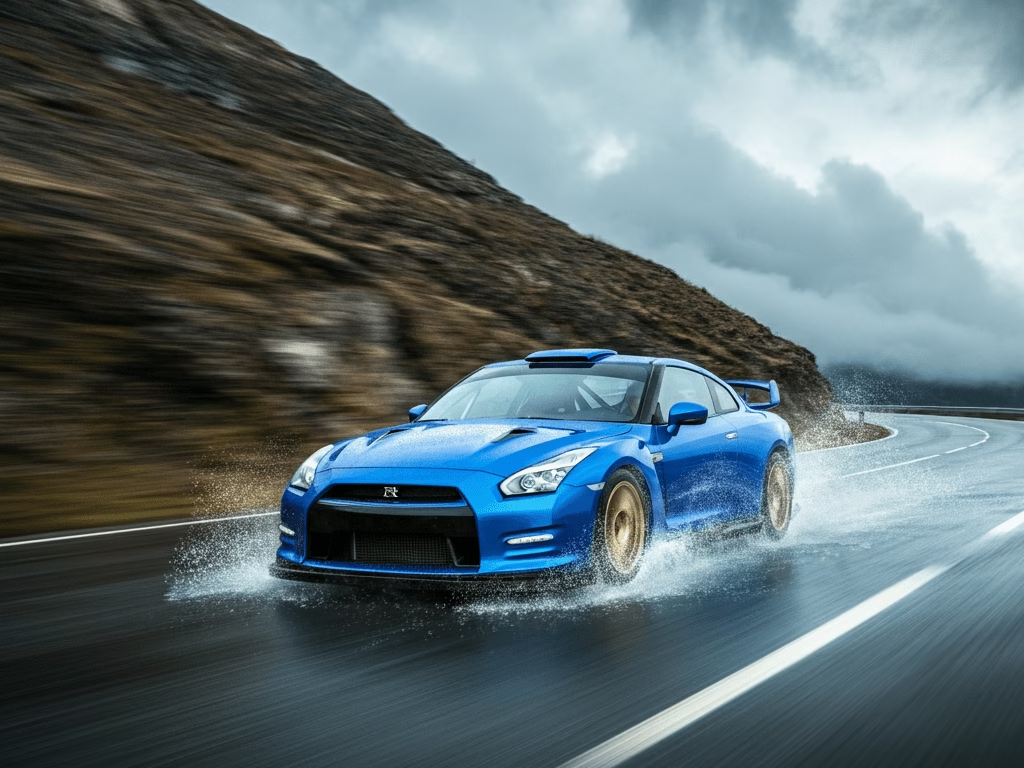
The GT-R name has deep history, but when Nissan began selling the R35 GT-R in 2007, it changed what you could expect from a high-end Japanese car: rocketing acceleration, advanced AWD systems and electronics that allowed average pilots to wring race-car performance out of the car.
The R35, with its hand-built twin-turbo V6 and sophisticated all-wheel drive and software, had transcended boundaries the world over it dawned a new era.
MotorTrend’s modern coverage notes the car’s performance envelope and engineering legacy.
Why it mattered:
- Supercar-caliber performance at relatively attainable prices.
- An exhibit for Japanese talent in traction, turbocharging and electronics.
- Gargantuan tuning and racing scene behind the GT-R name.
Quick specs (R35 early): 3.8L twin-turbo V6 ~480 hp (early) AWD with launch control low-3-second 0–60 time.
3.Toyota Supra (A80 / MkIV) -The Tuners’ Fable
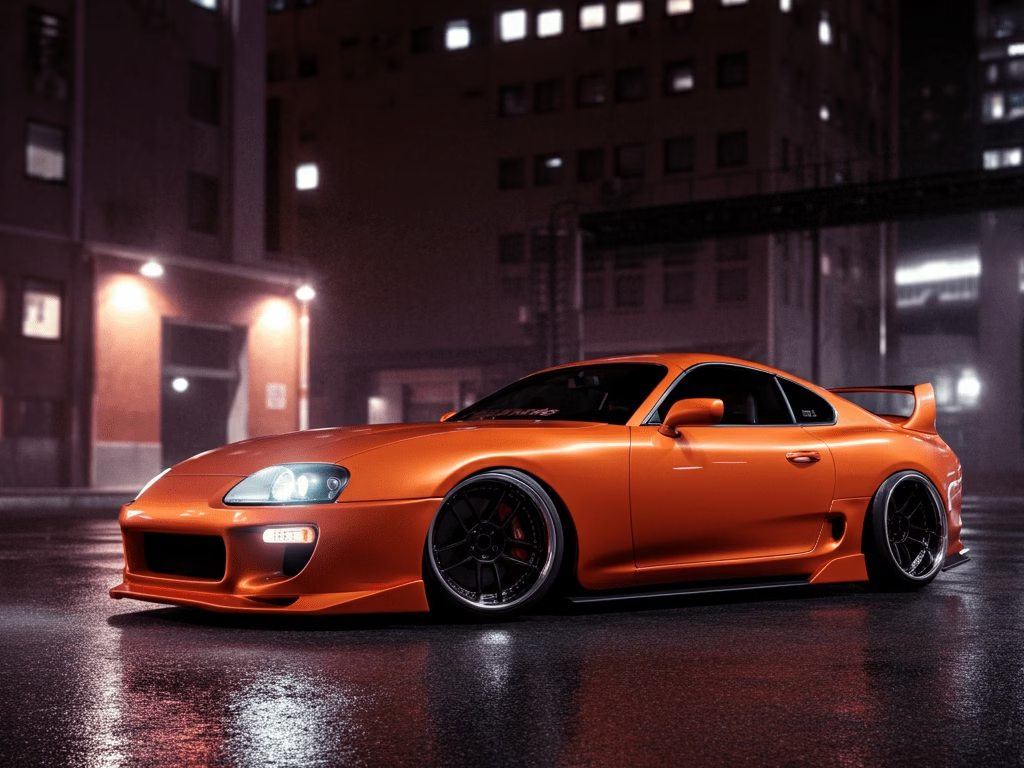
For a car that should never have been the Toyota Supra MkIV has become one of the most celebrated cars in tuner folklore.
When you mention the MkIV Supra (1993–2002), it’s code for big power, massive tuning potential and a godly 2JZ powerplant This is shorthand.
Fans don’t just praise the Supra for its factory horsepower, but also for what you could squeeze out of the engine with common-sense mods it was really the poster boy of this new post-factory era, particularly in North America.
Deep dives into the MKIV by Car and Driver frequently highlight its potent powertrain and even-keeled chassis. Car and Driver
Why it mattered:
- 2JZ-GTE motor (brutal strong and durability even tuned to death).
- Iconic design and pop culture (movies, games) status.
- Solidified the notion that Japanese cars could be reliable and totally savage when modified.
Quick specs (Turbo model): 3.0L twin-turbo inline-6, factory 320+ hp (spec higher for Japanese market), robust block.
4.Honda NSX (Acura NSX) – F1 tech in a reliable daily bullied package
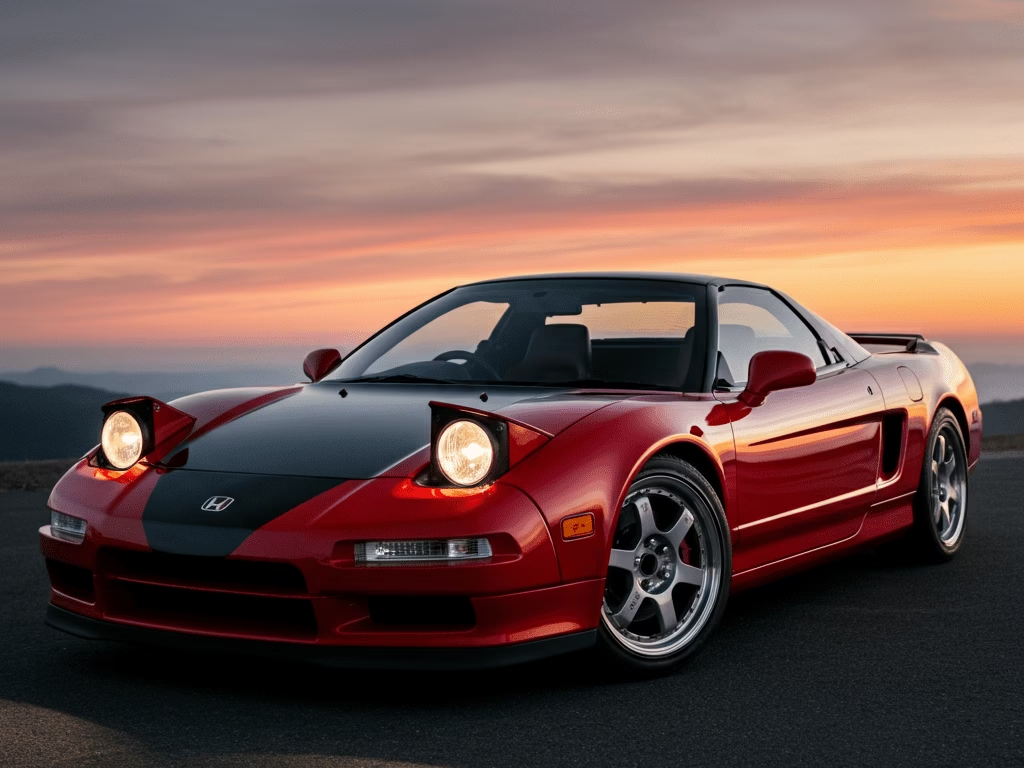
Honda wanted to create a supercar that delivered as close to an F1 car experience on the road but also remained reliable enough for every day use.
With its aluminum construction, its balanced mid-engine layout and an ethos that prioritized feedback between driver, engine and chassis, the NSX was a car that upended supercar orthodoxy it showed that you could have exotic handling without fragility.
Road & Track’s history mentions Honda’s commitment to aluminum construction and F1 thinking when the NSX was developed.
Why it mattered:
- Supercar design priorities reversed: balance, feel and reliability.
- Demonstrated that Japan’s engineering could compete with and even surpass anything Europe offered.
- Influenced a generation of engineers and designers in Japan.
Quick specs (first-gen): mid-mounted V6, aluminum monocoque/body, fantastic chassis balance.
5.Mazda RX-7 (FD)
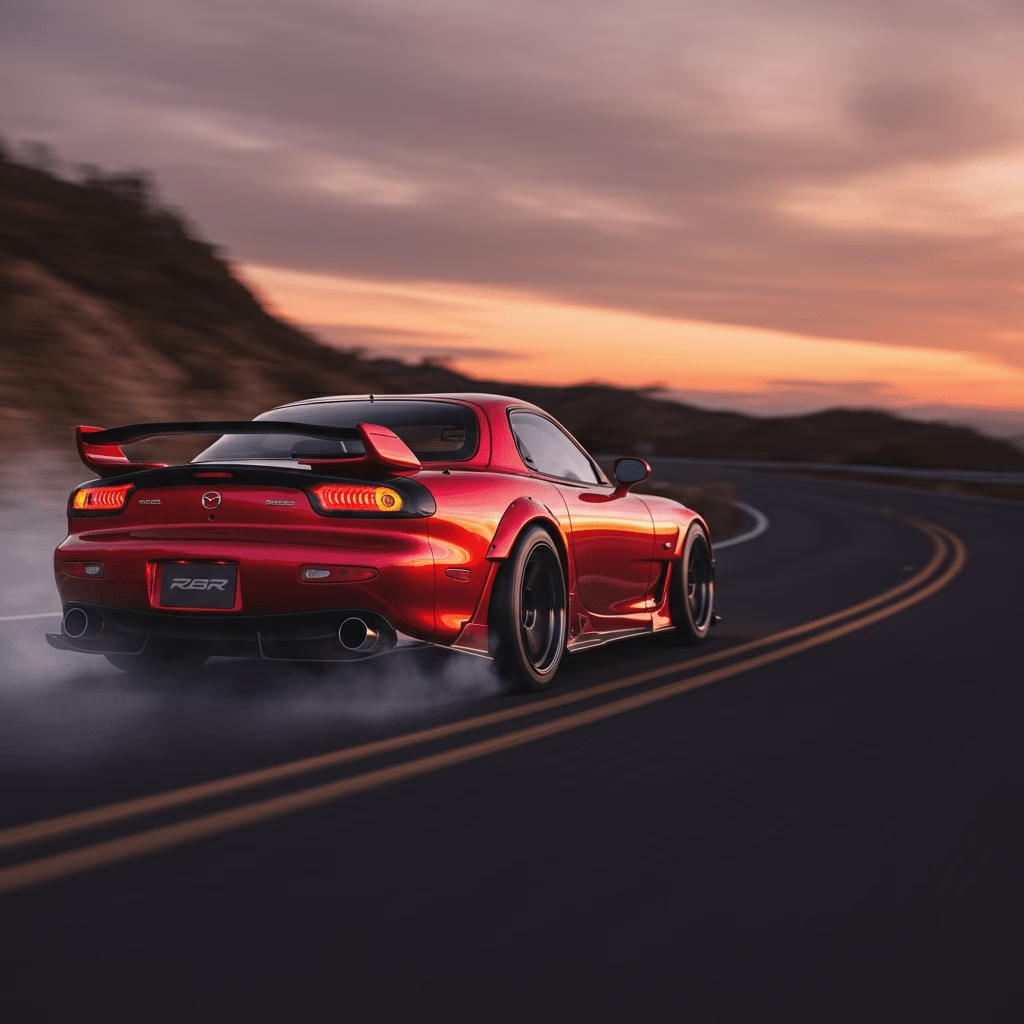
the rotary’s high point If you’re a rotan gesting gearhead, and if you haven’t already bought one, stay away.
The FD RX-7 is the rotary’s ultimate modern parody: light as a feather, eager to rev, and aesthetically divine.
The rotary engine in Mazdas made it possible to spool up a compact powerplant to loft the tack and deliver gobs of creamy thrust, resulting in cars that felt awake each time you wound up the tach.
(from Hagerty’s coverage) & documentID=4638011 Hagerty highlights the FD being wanted and climbing in collectability. Hagerty
Why it mattered:
- Car exhibited an alternative engine to the rotary with a charismatic dynamic.
- Became a cult-grade leitmotif for those who cared more about handling and character than the wallop of raw torque.
- Timeless design and nimble handling made it a driver’s car above all.
Quick specs (FD): 1.3L twin-rotor rotary, sequential twin-turbocharger on some models, ultra-extreme lightweight, very sharp handling.
6.Mitsubishi Lancer Evolution rally missile to the street stormer it became

The Lancer Evolution series, which was developed for WRC races, opened the world’s eyes to the fact that Japanese automobiles could exhibit huge performance on grueling special stages and then be transformed into well-behaved street cars.
Assisted by turbocharged four-cylinder engines, all-wheel-drive systems developed around handling (not just traction), and edgy aerodynamics, Evos were track and street all-stars right out of the box.
Their rally-honed DNA inspired a generation of AWD performance cars and created a rabid global fanbase.
Why it mattered:
- Taught rally to the production road car.
- Raised the standard that lightweight, turbocharged, AWD Japanese cars could outsmart heavier competitors.
- Strong aftermarket and motorsport following.
Quick specs (example Evo VIII–IX): 2.0L turbo I4, AWD, sophisticated active differentials on later models.
7.Subaru Impreza WRX/WRX STI Rally love for everybody

Subaru’s Impreza WRX and WRX STI brought rally performance into the realm of practical hatchbacks and sedans, putting a very capable AWD platform in the hands of drivers without camping gear or a co-driver while still being functional for daily life.
With their boxer engines, low center of gravity and chassis setup, the cars possessed biting turn-in and excellent traction a formula that charmed Japanese cars into the hearts of grassroots racers and weekend athletes.
Why it mattered:
The question was: How to put all-weather performance in the hands of the people, and what did rally-derived tech have to do with that?
- Created one of the largest grassroots motorsport and tuning scenes.
- The STI models have been these halo cars that reminded everyone of Subaru’s motorsports background.
Quick specs (classic WRX STI): 2.5L boxer turbo, AWD, driver-centric chassis.
8.Toyota Corolla (AE86) lightweight innocence versus drift culture
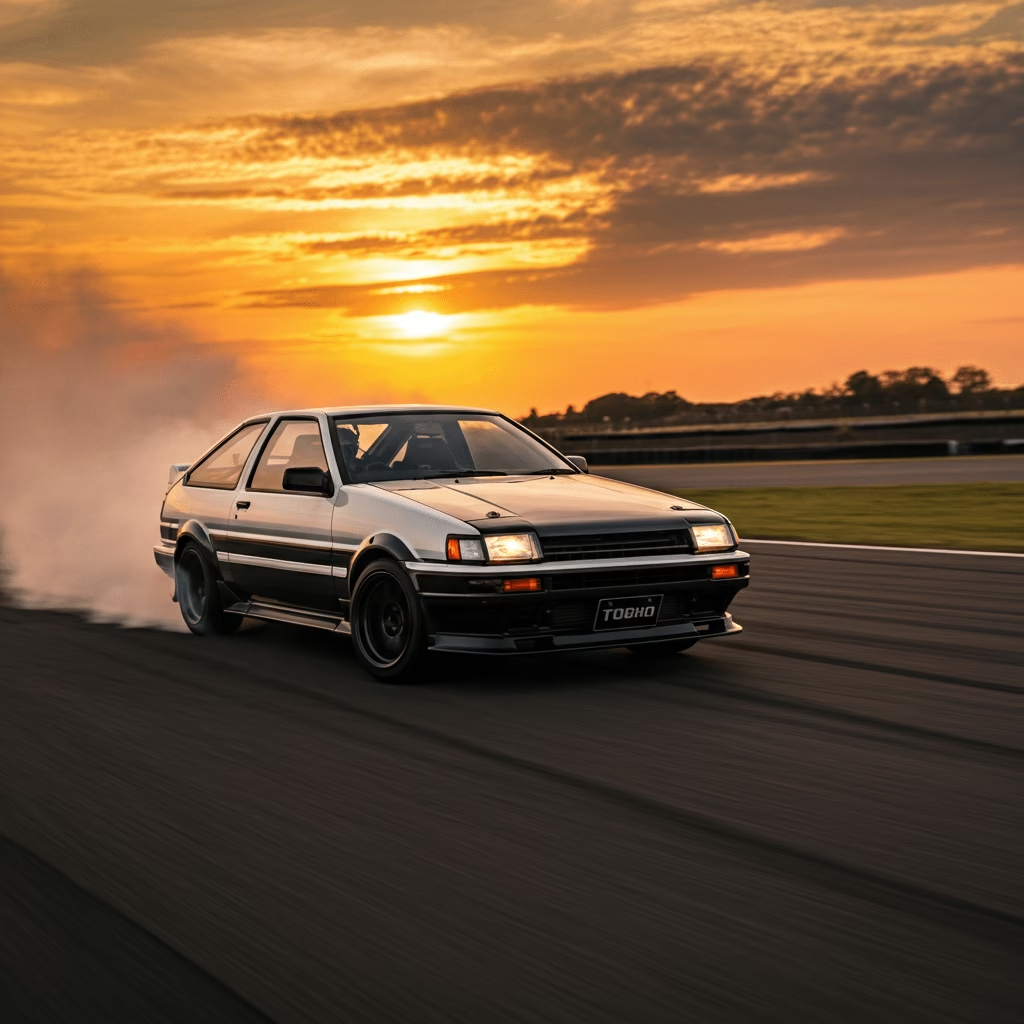
The AE86 Corolla might seem unassuming, but its rear-drive balance, feathery weight and rev-happy engine made it a drifting and grassroots racing icon.
It’s an ideal example of how Japanese cars could be built with a driver-first philosophy, and thanks to its position in drifting culture (and anime) it became iconic well above what the specs suggest.
Why it mattered:
- Ignited international grassroots motorsport and drift culture.
- Demonstrated that small, lightweight, rear-drive Japanese cars could be exciting and affordable.
- Long lived aftermarket and enthusiast development maintain AE86s on the road today.
Quick specs (AE86): 1.6L DOHC inline-four, light bodywork, rear-drive layout.
9.Lexus LFA boutique engineering, spiritual payoff
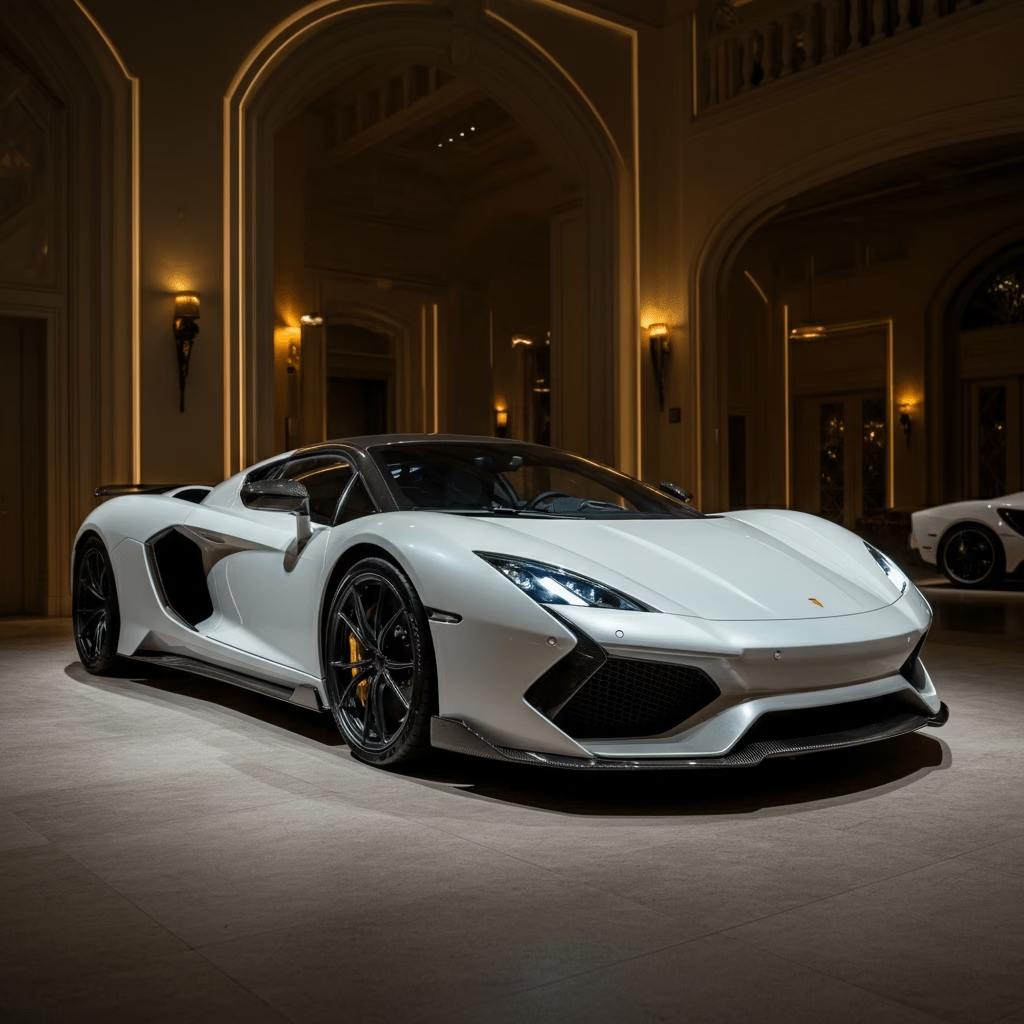
Lexus shocked the doubtful guardians of cynical automotive sensibility by actually going and making the LFA: a limited-run supercar that delivered on its promise of natural sound, high-revving V10 theatrics and laser-focused chassis dynamics punto.
Though Lexus had established for itself a brand identity rooted in luxury and reliability, the LFA demonstrated that a Japanese luxury brand could develop a distinct supercar entirely divorced from market or demographic pressures not just a dreamy trophy car but an image-defining benchmark of capability.
Why it mattered:
- Took the Lexus brand into supercar consideration.
- Confirmed Japanese cars craftsmanship on another level carbon fiber, bespoke engine and obsessively detailed.
- Acclaim for sound, response, and exclusivity gathered over time.
10.Honda Civic Type R hot hatch performance perfected

From their roots as a thrifty econobox, to the track-ready hot-hatches of today, the Civic Type R represented incremental performance engineering over utility.
The new Type R combines aero, rigid chassis and powerful N/A or turbo engines to make one of the best front-wheel-drive track cars available no mean feat for what is essentially the compact car class and a great example of how Japanese cars balance mundane usability with hardcore performance.
Why it mattered:
- Demonstrated that compact, useful cars could be murderously competitive on tracks as well.
- Advanced FF performance engineering indeed (torsional, aero, bizarre LSD tech).
- Strengthened the Civic as both a reliability and performance platform.
Common threads across these game-changers
- Engineering-first worldview: Japanese manufacturers have historically placed a premium on clever mechanical engineering (rotary engines, AWD systems, aluminum construction) as opposed to just power figures up the wazoo.
- Accessibility + performance: These cars brought accessible performance the 240Z, Evo, WRX and early GT-Rs expanded the market.
- Culture and aftermarket Tunability: plus motorsport success, bred fanatical communities that prolonged the relevance of every car.
- Dependability meets performance: Unlike the more-exotic exotic foes, these Japanese cars combined durability and speed a mix that helped them reach more drivers and sustained their popularity.
How these cars influenced the modern JDM movement (opinionated takeaways)
- For collectors: Buy well-kept specimens, originality is king with early icons (240Z, MkIV Supra, FD RX-7).
- For tuners: Platforms such as the Supra and GT-R offer documented headroom for upgrades be mindful of cooling and drivetrain limitations.
- For drivers: Look for cars that suit mission rally-bred AWD for all-condition fun, featherweight rear-drive for pure handling joy.
- For content generators: These cars are evergreen story sources their stories intersect technology, culture, racing and personality.
Further reading (reputable sources)
Hungry for a more technical and historical take? Two great resources I always recommend are Car and Driver (for extensive model histories, long-form driving features) and Road & Track (engineering context, cultural essays) they both have some awesome stories on many of the japanese cars listed above.
Final thoughts

When people discuss Japanese cars that changed the game, they’re most likely referring to the combination of innovation, affordability and emotional connection these models fostered.
From the Datsun 240Z’s democratising charm to the NSX’s stealthy revolution and the GT-R’s brutal supercar aura, Japan re-wired expectations for performance, reliability and engineering flair.
If you enjoy cars that reciprocate a little focus the sensuous ones, the quick ones, the reliable ones these ten legends are your reference.
FAQ’S On Japanese Cars
1. What makes Japanese cars legendary in the automotive world?
There are reasons why the world adores Japanese cars: precision engineering, reliability, innovation and the feeling that you’re not just a driver but part of an overall experience. It was cars like the Toyota Supra to the Nissan GT-R, and Japanese automakers built performance machines that delivered supercar thrills at real-world prices there are many reasons why they changed global car culture.
2. Which Japanese cars are considered the most influential of all time?
The most influential Japanese cars include:
- Datsun 240Z – Allowed everyone to enjoy a sports car.
- Toyota Supra MkIV – Started the tuner revolution.
- Honda NSX – Brought supercar levels of reliability.
- Nissan GT-R – The new interpretation of performance.
- Mazda RX-7 FD – Refined performance of the rotary engine.
These models shifted the standards for both performance and design, reshaping carmakers across the globe.
3. Why are Japanese sports cars so popular among enthusiasts?
Japanese sports cars provide a one-of-a-kind blend of affordability, tuning potential and reliability. They are light, well balanced and easy to modify; they remain favorites of both professional racers and car culture fans alike. Performance Cars such as the Honda Civic Type R and Mitsubishi Lancer Evolution exhibit this performance DNA, if you will; however it is within reaching distance.
4. Which Japanese car changed the supercar industry forever?
The Honda NSX revolutionised the supercar culture with F1 technology, aluminium construction and everyday drivability. Prior to the advent of the NSX, it was general assumed that a supercar had to be both uncomfortable and unreliable; Honda showed Japan’s technological might could also deliver a precision-engineered exotic car that didn’t fall apart when pressed.
5. What is the most iconic Japanese car engine ever made?
One of the most iconic Japanese engines is known as the 2JZ-GTE. With its rigidity, tuning potential and it’s ability to deal with over 1,000bhp without heavy engine internals made it a Japanese engineering icon.
6. Are classic Japanese cars good investments in 2025 and beyond?
Yes classic Japanese cars are hotter than ever before in the collector car and collector community.” Cars such as the RX-7 FD, Supra MkIV, Skyline GT-R or AE86 Corolla are still being highly valued simply because of scarcity and nostalgia, but also because JDM culture has been on the up. Their durability and replaceable parts ensure we can consider them long-term investments.
7. What does JDM mean, and why is it important to Japanese car culture?
JDM is an abbreviation for Japanese Domestic Market, so these are the cars that were made specifically to be sold in Japan. JDM cars are desirable for their special specifications, increased performance and production limitations when compared to the export models. They are core to the world’s car culture, because they symbolize authenticity and craftsmanship from Japan.
8. How did Japanese cars influence modern performance vehicles?
Japanese cars even blazed the trail on technologies that have since become standard in high-performance machines from turbocharging (Evo, WRX) to advanced aerodynamics (NSX, Type R) and electronic driver aids (GT-R). Their focus on accuracy and driver involvement forced other manufacturers to significantly stress handling, economy performance and new technology.
9. What’s the difference between Japanese sports cars and European sports cars?
Whereas European sports cars tend toward luxury and prestige as key values, Japanese sports cars generally spring more from engineering efficiency and value. Japanese models frequently offer similar performance for a fraction of the cost, and with better reliability en tuneability, and it’s these cars that appeal to motorists who need all the performance in their real world.
10. Which modern Japanese cars carry on the legacy of these legends?
- Nissan GTR Godzilla– The legacy of Godzilla continues!
- Toyota GR Supra – Contemporary interpretation of the Supra heritage.
- Honda Civic Type R- FL5 – Best hot hatch.
- Subaru WRX STI – Turbo AWD performance legend.
These present-day versions maintain the tradition of Japanese cars with radical evolution and race-bred excellence.



